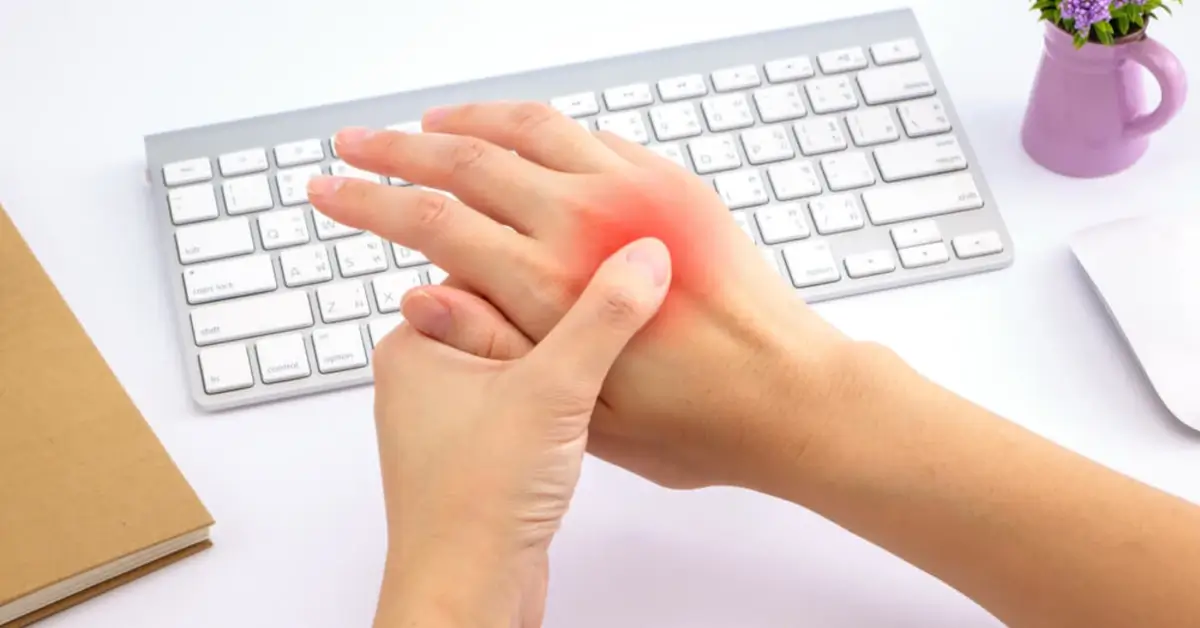It turns out that office work, once considered easier on the body and safer than physical labor, also has its drawbacks and risks.
From hand and wrist pain to full-blown carpal tunnel syndrome, long-term computer use may be to blame.
With the widespread computer use, there has been a corresponding increase in hand and upper extremity problems. For many, this has caused significant work absence due to crippling pain. There’s even been a rise in surgery.
One common phenomenon attributed to extensive computer use is called repetitive strain injury (RSI). RSI is an overuse injury caused by repeating the same motions for hours on end over extended periods of time.
However, in a New York Times interview, Dr. David M. Rempel, an occupational medicine physician at the University of California, San Francisco, offered a different perspective on the issue.
Rempel states that the term “repetitive strain injury” implies that repetition is the core cause of the problem. Yet, he feels the issue may be more complex, attributing the pain and injury to other possible causes, such as the heavy load or high forces exerted on the fingers during typing.
Rempel points out that recent research indicates that when using the keyboard for fewer than 20 hours per week, the risk of carpal tunnel syndrome (a condition that results from RSI) is very minimal, and perhaps poses no risk at all. However, the verdict is still out for use that exceeds 20 hours per week. This is credible evidence for controlling the amount of time spent on the computer whenever possible.
Whether it is pain from any aspect of computer use or other contributing circumstances, it is important to be alert to the problem. Even temporary discomfort caused by computer use can be a forbearer of future problems if you don’t adapt your habits.
Here are some tips to help avoid or alleviate pain or injury if you work for extensive periods of time on a computer:
- Make sure your work space is set up to avoid strain as much as possible on your hands and entire upper body (neck and back included). Thus, your space should be adjusted so that you are sitting comfortably while typing.
- Sit up straight and use a chair that supports your spine, and/or place a roll or pillow behind your lower back for support if necessary.
- Keep your feet flat on the floor.
- Set up your monitor so it is directly in front of you, with the top of the screen at eye level, or slightly below eye level.
- Be sure your keyboard and mouse are low enough to allow you to relax your shoulders. When you are typing, make sure your wrists are straight (i.e., your hands are not bent up at the wrists). Never rest your wrists on the desk or armrests while you’re typing or using a mouse.
- Try to use a gentle touch while typing. Exerting pressure overworks the hands and wrists.
- Although any mouse can cause some stress, an ergonomic mouse can reduce some strain on your arm.
- Try a different mouse. This can help redistribute the stress to different arm muscles. It not only helps to avoid injuring an overstressed area, it allows an existing injury to heal, especially if you also use the other techniques on this list.
- Consider an ergonomic keyboard. Try different ergonomic keyboards before you buy.
- Stretch frequently while at the computer. This includes your hands, arms and back. However, do not stretch to the point of pain or if it exacerbates existing pain.
- Take frequent breaks. Take your eyes off the screen, and if you are able to, get up and walk around.
- If you have symptoms of pain or discomfort, cut down on your computer use.
At The Center for Musculoskeletal Disorders, we can help if you suffer from hand, wrist or elbow pain. There are a variety of causes for hand pain, and the appropriate treatment will depend on the type you have. Our experienced board certified hand surgeon, Dr. Michael Horowitz, is committed to individualized care and an understanding of your unique problems and needs.

